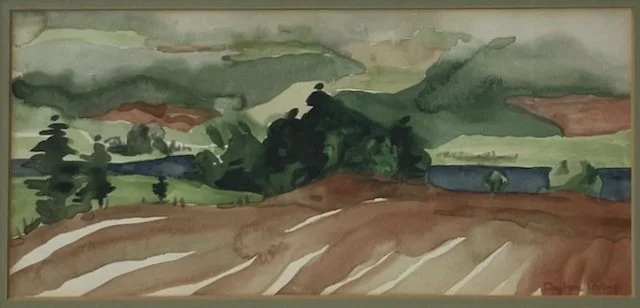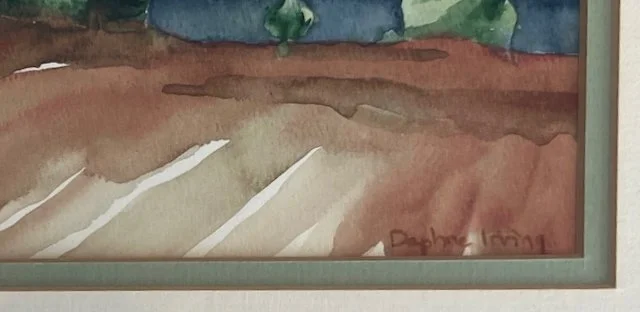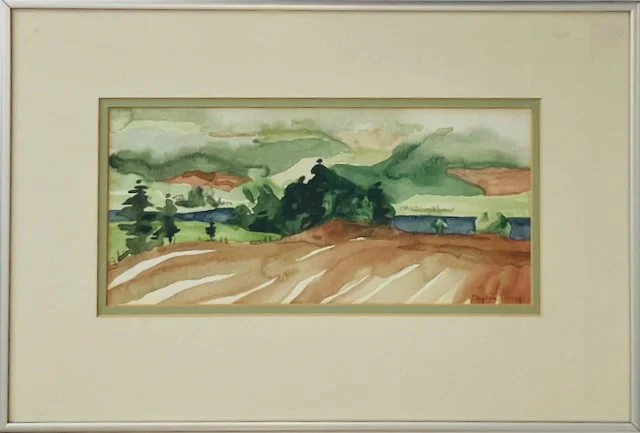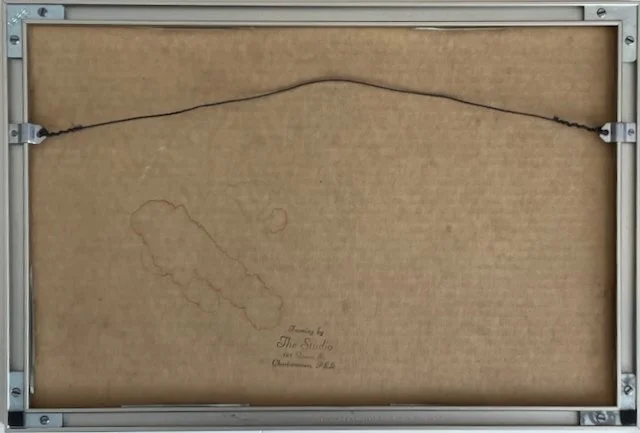Art
Daphne Irving
Daphne Irving
Title: Ploughed Fields
Artist: Daphne Irving
Image size: 5 1/4” x 11 1/4”
Frame size: 11 1/2” x 17”
Description: Watercolor on paper. Signed by artist at bottom right. Matted and framed under glass.
Daphne Margaret (Butler) Irving (1931-2024) is well known for “lush and fluid paintings of Prince Edward Island.” Her career spanned over 50 years and included landscapes, a period of abstraction, and, finally, a more figurative approach in the 1980s focused on depictions of religious narratives. “Born and raised by Canadian parents in the United States, Daphne studied art at the Boston Museum of Fine Arts and Mount Allison University. Mentored by Alex Colville and Lawren P. Harris, Irving’s early work was grounded in technique and focused on realistic landscape painting. Following studies with George Angliss in the late 1960s, she began to adopt a more intuitive, lyrical approach, influenced by Abstract Expressionists such as Helen Frankenthaler. Throughout the 1970s her work—often drawn from the landscapes of Prince Edward Island, where she and her husband relocated in 1972—became increasingly abstract, as she responded to the fluid forms in nature and the effects produced by wet washes of watercolour paint. Embracing spontaneity and what she called the “sub-logical perception” of the world, Irving considered her work to be a visual exploration of the unknown, the unseen, the fundamental mutability and ephemerality of things. By 1979, after being elected to the Royal Canadian Academy of Arts, she was studying with Canadian abstract painter Ron Bloore, and exploring the pure expression of feeling in large-scale acrylic paintings. This shift was followed closely by an embrace of art as a spiritual practice. Since the mid-1980s, Irving’s work has been strongly Bible-based and sometimes figurative, focused on prophecy and revelation. Such unfashionable subject matter isolated her somewhat from the artistic circles and audience she had enjoyed for over a decade. Nonetheless, Daphne Irving remained admired and treasured, especially by her fellow artists, who recognize the integrity and quality of her work.”
Source: Pan Wendt, Confederation Centre of the Arts, Charlottetown



